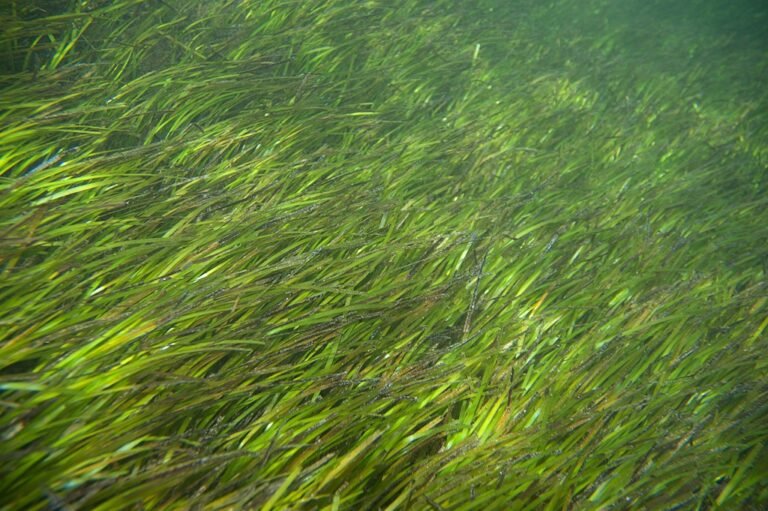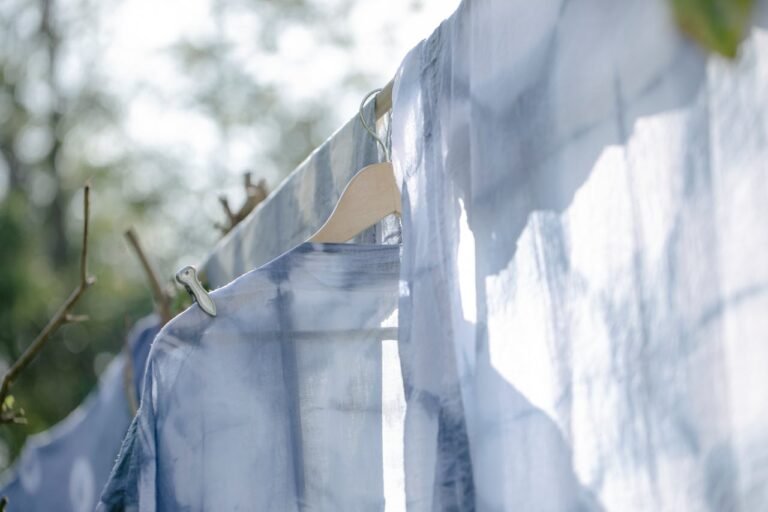8 Eco-Friendly Burial Methods to Reduce Your Environmental Footprint
It’s either traditional burial or cremation — these methods are widely practised around the world today due to cultural and religious beliefs. Convincing billions of people that cremation and conventional burials cause irreparable harm to the environment is a challenge. Many are unlikely to believe that these burial practices are unsustainable, contribute to deforestation, and rely on excessive energy consumption. However, it’s important to highlight the environmental cost of traditional burials. In the United States alone, traditional burials destroy an estimated 77,000 trees annually for caskets, use 100,000 tons of steel, and require over 4 million gallons of embalming fluids. Cremation, a practice common in Hinduism, is also resource-intensive — it relies on fossil fuels and emits pollutants such as oxides, nitrogen oxides and carbon monoxide into the atmosphere.
Growing concern about climate change and the recent sustainability movement has raised awareness, influencing families to make sustainable choices when a loved one passes. More families are opting for eco-burials, an effort to lay a deceased loved one to rest in a more environmentally friendly way.
According to a 2022 study conducted by the National Resources Defence Council, green burial options use 90% fewer resources than traditional burial methods. A survey by the NFDA also shows that 64% of Americans are now interested in eco-burial options, compared to just 43% a decade ago.
In this article, we will consider green burials, an emerging trend that offers sustainable alternatives to traditional burials and cremation, including various options available, along with a comparison of their benefits, legal considerations, and cultural significance.
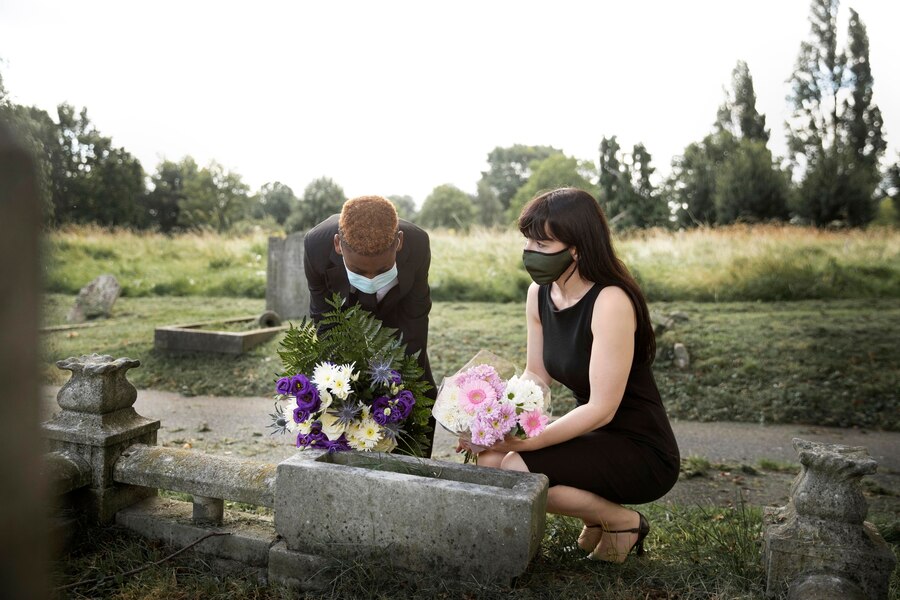
In This Article
- The Rise of Eco-Friendly Burials
- The Environmental Impact of Traditional Burial and Cremation
- Eco-Friendly Burial Alternatives
- The Practical Benefits of Eco-Burials
- Legal Restrictions and Availability of Eco-Burial Options
- Global Perspectives on Eco-Friendly Burials
- Address Ethical Concerns around Human Composting and Aquamation
- The Role of Rituals and Ceremonies in Green Burials
- Practical Tips for Planning an Eco-Burial
- Conclusion
The Rise of Eco-Friendly Burials
Historical and Cultural Evolution of Burial Practices
Traditional burials and cremation have existed for millennia. The ancient Egyptians embalmed their dead as a way to prepare the body for the afterlife. Mummified human remains discovered over the past century demonstrate how this ancient civilisation expertly preserved bodies with embalming fluids. Today, embalming remains a common practice to preserve bodies before funerals. Cremation, on the other hand, is a method of honouring the dead, particularly in Hindu and Buddhist cultures.
In today’s world, industrialisation has exacerbated the environmental impact of these practices, with the use of toxic chemicals like formaldehyde in embalming fluids, harvested hardwood for coffins, and the release of tons of CO2 into the atmosphere. Cemeteries are running out of space, and it has become increasingly clear that traditional burials are unsustainable. As a result, there has been a growing shift toward green burial methods, especially in North America and Europe.
Popularity and Growth of the Eco-Burial Movement
The past few years have been a period of transition, as the demand for sustainable burial options has grown significantly. According to a report by the Green Burial Council, there are now over 200 certified green burial cemeteries in the United States, and this number is expected to increase in the coming years. Green burials are designed to bury bodies in an eco-friendly way, without the use of non-biodegradable materials or toxic chemicals.
While eco-burials are quickly gaining popularity in the United States and Europe, they are less common in other parts of the world.
The Environmental Impact of Traditional Burial and Cremation
The Hidden Costs of Traditional Burial
Traditional burials have always been a resource-intensive process. From harvesting hardwood for caskets to extracting raw materials for steel and copper components, and concrete for making vaults at cemeteries, the reliance on and use of these resources takes a toll on the environment. Embalming fluids also have a devastating environmental impact. Formaldehyde, a toxic fluid used in preserving bodies, is a known carcinogen that can leach into the soil and groundwater over time.
According to a study by the Berkeley Planning Journal, cemeteries in the United States collectively bury an estimated 30 million board feet of hardwood, 104,272 tons of steel, and 1,636,000 tons of reinforced concrete annually. Obtaining these resources leads to deforestation and air pollution. Burying bodies filled with embalming fluids can also cause soil and water contamination.
Additionally, cemetery maintenance often includes mowing, watering, and the application of synthetic pesticides—yet another source of toxic chemicals that can lead to pollution.
Learn More: Burial Vs. Cremation: Which Is More Eco-Friendly?
The Pollution of Cremation
Cremation, a fossil fuel-driven process widely practised in Hinduism, is often seen as a more sustainable alternative to traditional burial. Cremating a body requires temperatures ranging from 1,400 to 2,000 degrees Fahrenheit (760 to 1,090 degrees Celsius), consuming up to 30 gallons of fossil fuel per body and emitting tons of CO2 into the atmosphere.
A single cremation can generate as much CO2 as a car driving 609 miles. According to the National Funeral Directors Association (NFDA) and other reliable sources, cremations in the United States have surpassed burials as the most popular end-of-life option. Crematoriums not only generate CO2 but also emit fine particulate matter and volatile organic compounds (VOCs).
Comparison Table of Burial Methods
| Burial Method | Materials Used | Environmental Impact | Estimated Cost | Legal Availability |
| Traditional Burial | Embalming fluid, steel, hardwood | High land use, groundwater contamination, high resource consumption | $7,000 – $12,000 | Widely available |
| Cremation | Fossil fuels, steel (urn) | High CO2 emissions, mercury emissions from fillings | $1,500 – $4,000 | Widely available |
| Natural/Green Burial | Biodegradable shroud/coffin | Minimal impact, encourages natural decomposition | $1,000 – $4,000 | Legal in most U.S. states |
| Aquamation | Alkaline solution (water-based) | Low energy use, 90% fewer emissions than cremation | $2,000 – $5,000 | Legal in 28 U.S. states |
| Human Composting | Organic materials (wood chips, straw) | Reduces CO2, produces nutrient-rich soil | $4,000 – $7,000 | Legal in a few U.S. states |
| Reef Burial | Cremation ashes, eco-concrete | Creates marine habitat, helps restore coral reefs | $2,500 – $7,000 | Limited, mostly U.S. coastal areas |
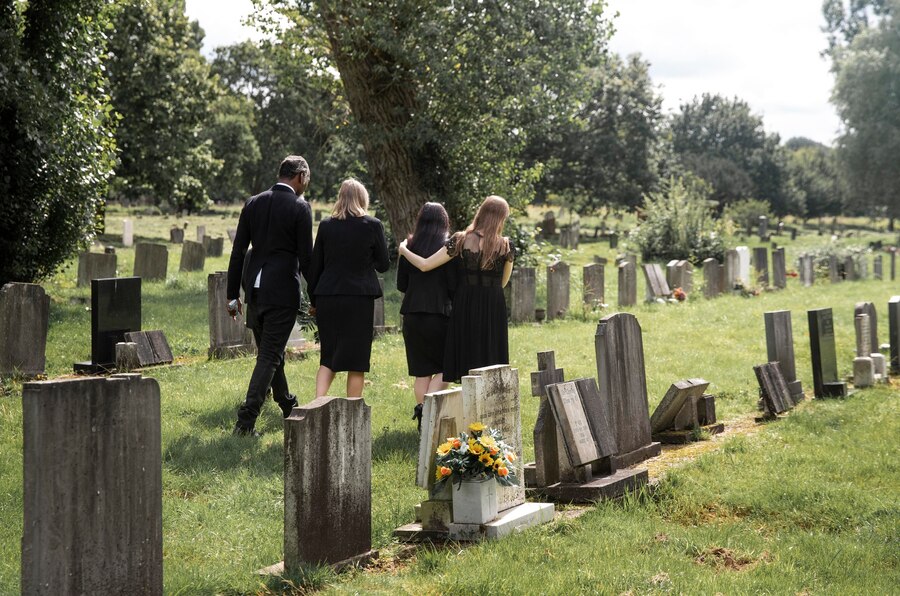
Eco-Friendly Burial Alternatives
#1. Natural or Green Burial
First on our list is natural burial, also referred to as green burial. This sustainable option returns the human body to nature without the use of toxic chemicals. In this process, a biodegradable shroud or coffin is used to bury the body, and the burial site remains a natural habitat with minimal disturbance to the environment.
The environmental benefits of natural burials include:
- No Embalming Chemicals: In a natural burial, embalming fluid is not required, allowing decomposition to occur naturally without the introduction of toxic chemicals that could contaminate the soil.
- Biodegradable Materials: Unlike traditional burials, the body is placed in a biodegradable shroud or coffin made from materials such as cotton, bamboo, or wood.
- Minimal Land Use: Green burial sites typically do not cover large areas of land. Instead, they are often part of nature preserves or conservation areas, preserving the natural state of the site.
- Carbon Sequestration: Green burials help preserve natural forests and meadows, which sequester carbon dioxide and contribute to mitigating the effects of climate change.
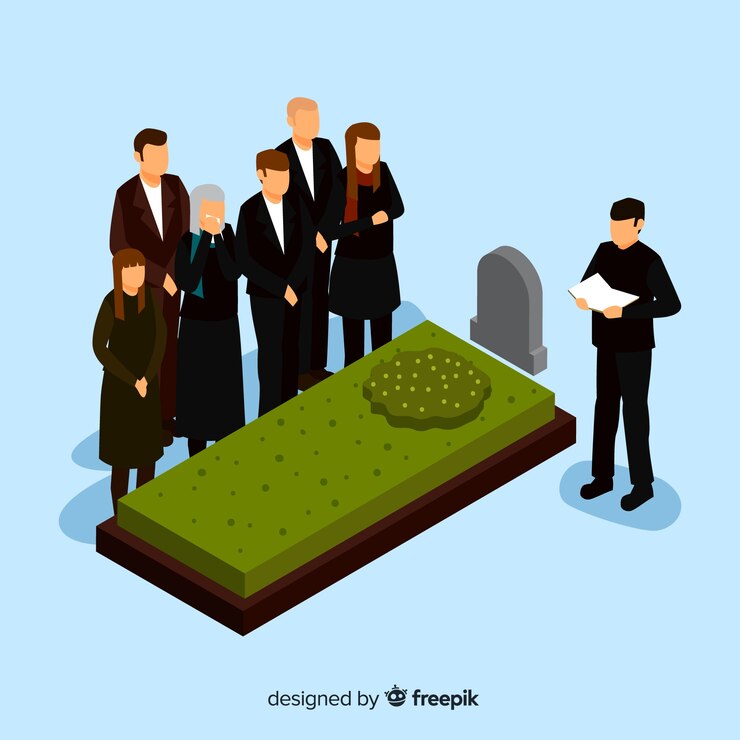
#2. Aquamation (Alkaline Hydrolysis)
Aquamation, also known as water cremation, is a newly developed sustainable method for the final disposition of a dead body through a process that uses water and an alkaline solution (potassium or sodium hydroxide) to break down the body into its chemical components. Water cremation reduces the body to just bones, which can be crushed into a fine powder and returned to the deceased’s family.
Water cremation uses less energy compared to fossil fuel-based cremation. According to studies, aquamation requires only 10% of the energy needed for traditional cremation and emits 35% less carbon dioxide. Aquamation is legal in several U.S. states, Canada, and parts of Europe.
#3. Mushroom Burial Suits
The mushroom burial suit was developed by Jae Rhim Lee, an artist and environmentalist. Lee’s Infinity Burial Suit is made of organic cotton and infused with mushroom spores, which aid in the decomposition process and help filter toxins. The suit is designed to return the human body to nature in an environmentally beneficial way. Its ability to neutralise toxins, such as heavy metals and other pollutants in corpses, makes it an excellent option to consider.
Speaking of the mushroom suit, Hollywood actor Luke Perry was buried in one after his death in the first quarter of 2019.
#4. Human Composting (Natural Organic Reduction)
Human composting, or Natural Organic Reduction (NOR), is a new method developed with the intent of sustainably handling deceased bodies. The process transforms bodies into nutrient-rich soil through a controlled, accelerated decomposition process that lasts about 30 to 45 days.
A biodegradable shroud is used to hold the body in a specially designed vessel, where it is surrounded by organic materials such as alfalfa, straw, and wood chips. As microbes begin breaking down the body, the temperature inside the vessel increases, accelerating the decomposition process. What remains after this process is about a cubic yard of organic soil, which is then handed over to the designated family.
Here are some advantages of human composting:
- Significant Carbon Savings: According to a study by Recompose, a company that provides NOR services, each human composting reduces carbon emissions by over a metric ton.
- Restorative Impact: Families can choose to use the soil created from their loved one’s body to restore natural forests, gardens, or conservation lands.
Human composting is currently legal in only a few U.S. states, including California, Colorado, Oregon, Vermont, and Washington.
#5. Reef Burials
Reef burial is another method of returning to nature, ideal for sailors and individuals who have enjoyed exploring the seas. It begins with cremating the body and mixing the ashes with eco-friendly concrete to form a “reef ball.” These reef balls are then placed in the ocean, where they gradually create artificial reefs to support marine life.
Reef burials have contributed to the restoration of damaged coral reefs, promoting biodiversity in areas affected by overfishing, pollution, and climate change. Eternal Reefs is one of the organisations offering reef burial services.
Learn More: Burial Vs. Cremation: Which Is More Eco-Friendly?
#6. Promession
Promession was developed by Swedish biologist Susanne Wiigh-Mäsak. It is an innovative burial method that uses liquid nitrogen to freeze-dry the body, which is then vibrated into a powder. The powdered remains are placed in a biodegradable coffin and buried shallowly to allow rapid decomposition. Promession is an energy-efficient process with zero toxic emissions, making it one of the most sustainable alternatives available.
According to a 2023 study, promession is more environmentally friendly and can significantly lower CO2 emissions associated with traditional burials and cremation. It is still in its early stages of development and is not widely available yet.
#7. Resomation (Bio-Cremation)
Resomation is quite similar to aquamation but uses a gentle chemical process to reduce human remains to their basic elements. The process takes place in a pressurised chamber, where a mixture of water and potassium hydroxide is heated to 160 degrees Celsius (320 degrees Fahrenheit). Over a few hours, the body is reduced to bones, which are then processed into a fine powder.
Resomation generates 95% less carbon dioxide than traditional cremation. It is gaining popularity in Europe, with the first Resomation facilities in the UK opening in 2021. The Carbon Trust reports that bio-cremation methods such as Resomation use 80% less energy compared to fossil fuel-driven cremation.
#8. Tree Pod Burials (Capsula Mundi)
The Capsula Mundi Project is an Italian initiative that offers an eco-friendly alternative to traditional burial methods. This method, more sustainable than conventional burials, places the body in a biodegradable pod. The pod is then buried with a sapling tree planted on top, allowing the decomposition to nourish the tree’s growth.
Although tree pod burials are not yet widely available, they have sparked interest in countries focused on reforestation. According to a 2020 study by the European Forest Institute, a single tree can absorb about 48 pounds of CO2 annually.
The Practical Benefits of Eco-Burials
Cost-Effectiveness
Eco-burials are less expensive than traditional burials and cremations. Unlike traditional burials, they do not require even a drop of embalming fluid or an expensive casket. Green burials are budget-friendly and can reduce funeral costs by 50 to 75%. The average cost for a green burial ranges from $2,000 to $4,000, compared to a conventional burial, which often exceeds $12,000.
According to the NFDA, families choosing eco-burials are not only doing so to save money but also to experience a more meaningful end-of-life process. Green burial sites are often located in natural settings, providing families with the opportunity to engage in memorial practices such as planting trees or native wildflowers to create lasting memories.
Legal Restrictions and Availability of Eco-Burial Options
The legality of green burial options varies by region, and it is highly recommended to do some research to check local regulations before making a decision. In the United States, for example, natural burials are not allowed in most states. Human composting and aquamation are also still illegal in most states.
Green burial cemeteries often operate under strict regulations that protect natural habitats. These burial sites prohibit the use of embalming fluids or non-biodegradable materials and may sometimes limit the number of burials to preserve the area’s ecological balance.
Global Perspectives on Eco-Friendly Burials
Eco-friendly burial practices have gained popularity in recent years, but acceptance varies based on cultural and religious factors. While natural burial options have been widely accepted in places like the UK and other more progressive regions, there is still resistance to eco-burial methods such as human composting and aquamation in more traditional areas.
Religious acceptance of eco-burials also varies. Some Christian denominations, for example, have embraced natural burials as a return to the “dust to dust” principle, while other religions may have stricter regulations regarding how the human body is handled after death. It is always advisable to consult with religious leaders and legal advisors to ensure that a chosen eco-burial option aligns with cultural and religious practices.
Address Ethical Concerns around Human Composting and Aquamation
Most people may be sceptical about human composting and aquamation. The idea of composting the human body or dissolving it in a pressurised vessel may seem unsettling to families who hold more traditional views about death and the afterlife.
However, proponents of these methods argue that they offer a respectful and sustainable way to return the body to nature. By converting the deceased into soil or using water-based decomposition, these methods allow individuals to give back to the environment in a meaningful way.
The Role of Rituals and Ceremonies in Green Burials
When choosing a green burial option, most families are concerned about whether they will be allowed to hold traditional ceremonies for their loved ones. Green burials do not preclude the inclusion of rituals, religious rites, or celebrations of life. Eco-burial providers often make spaces for memorial services available for families to honour their loved ones’ values and beliefs.
Practical Tips for Planning an Eco-Burial
- Research Local Options: Green burial options can vary by location, so always check what is available where you live.
- Choose a Green Burial Cemetery: Look for certified green burial cemeteries that prioritise environmentally friendly practices.
- Discuss Your Wishes with Family: If you’re elderly or unfortunately suffering from a terminal illness and would prefer an eco-burial, you need to make your wishes known to your family and loved ones. Tell them how you would like to be remembered.
- Consult Legal Advisors: Always check with legal advisors or funeral homes to ensure that your chosen eco-burial option complies with local regulations and laws.
- Plan a Personalised Ceremony: Just because a burial is eco-friendly doesn’t mean it has to be simple. Many green burials allow for personalised ceremonies that reflect the deceased’s values and beliefs.
Conclusion
Eco-friendly burials provide an opportunity to leave a positive environmental legacy, offering options that range from natural burials and tree pods to innovative methods like human composting and aquamation. As the world continues to face the challenges of climate change and resource depletion, choosing a green burial is a powerful statement of one’s commitment to sustainability.
By reducing carbon footprints, conserving resources, and restoring natural ecosystems, eco-friendly burials help protect the planet while honouring loved ones. As awareness grows and more burial options become available, we can shape a future where death and remembrance contribute to a healthier, greener planet.

